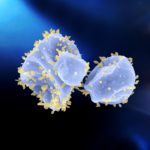Lien vers Pubmed [PMID] – 37824526
Lien DOI – 10.1073/pnas.2307717120
Proc Natl Acad Sci U S A 2023 Oct; 120(42): e2307717120
Archaeal lemon-shaped viruses have unique helical capsids composed of highly hydrophobic protein strands which can slide past each other resulting in remarkable morphological reorganization. Here, using atomic force microscopy, we explore the biomechanical properties of the lemon-shaped virions of Sulfolobus monocaudavirus 1 (SMV1), a double-stranded DNA virus which infects hyperthermophilic (~80 °C) and acidophilic (pH ~ 2) archaea. Our results reveal that SMV1 virions are extremely soft and withstand repeated extensive deformations, reaching remarkable strains of 80% during multiple cycles of consecutive mechanical assaults, yet showing scarce traces of disruption. SMV1 virions can reversibly collapse wall-to-wall, reducing their volume by ~90%. Beyond revealing the exceptional malleability of the SMV1 protein shell, our data also suggest a fluid-like nucleoprotein cargo which can flow inside the capsid, resisting and accommodating mechanical deformations without further alteration. Our experiments suggest a packing fraction of the virus core to be as low as 11%, with the amount of the accessory proteins almost four times exceeding that of the viral genome. Our findings indicate that SMV1 protein capsid displays biomechanical properties of lipid membranes, which is not found among protein capsids of other viruses. The remarkable malleability and fluidity of the SMV1 virions are likely necessary for the structural transformations during the infection and adaptation to extreme environmental conditions.


